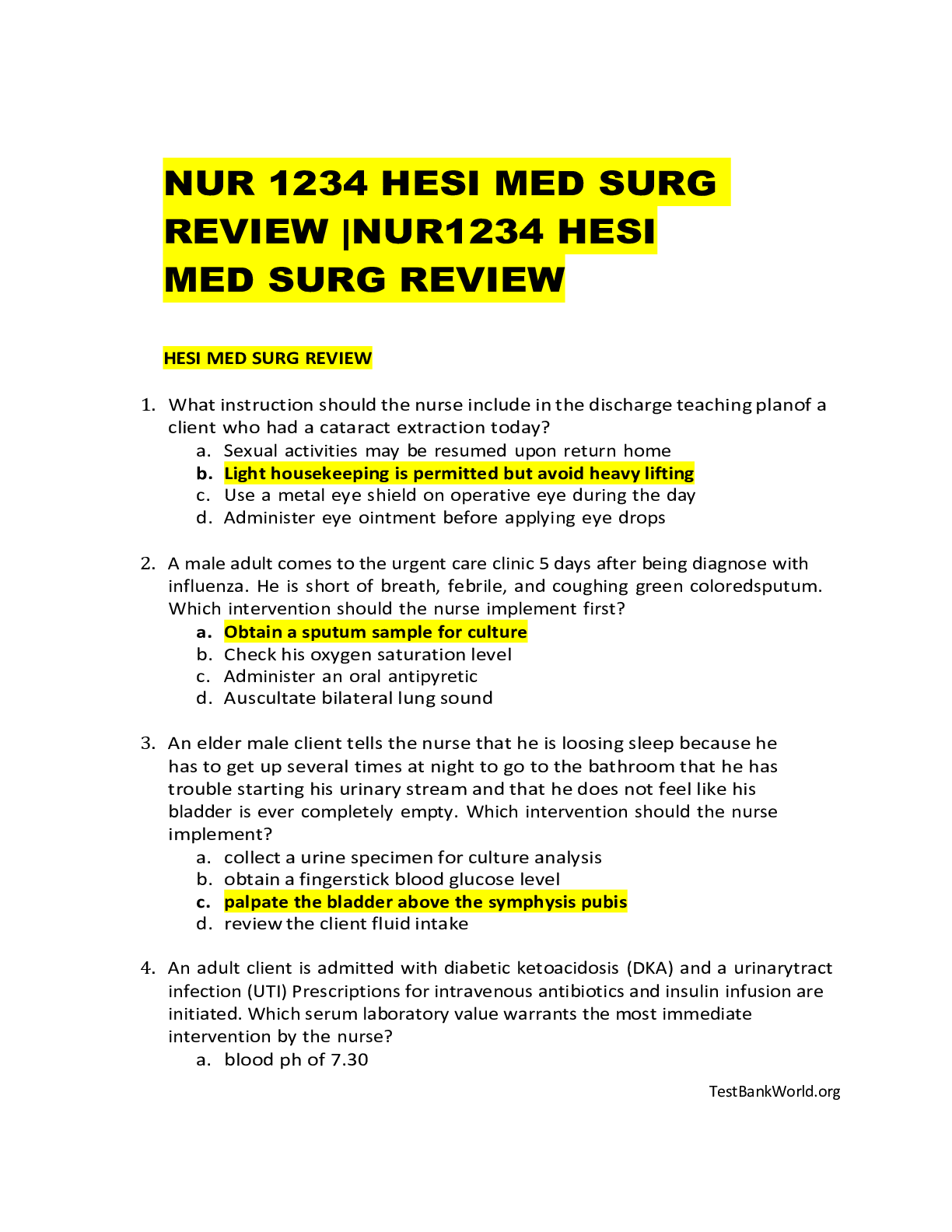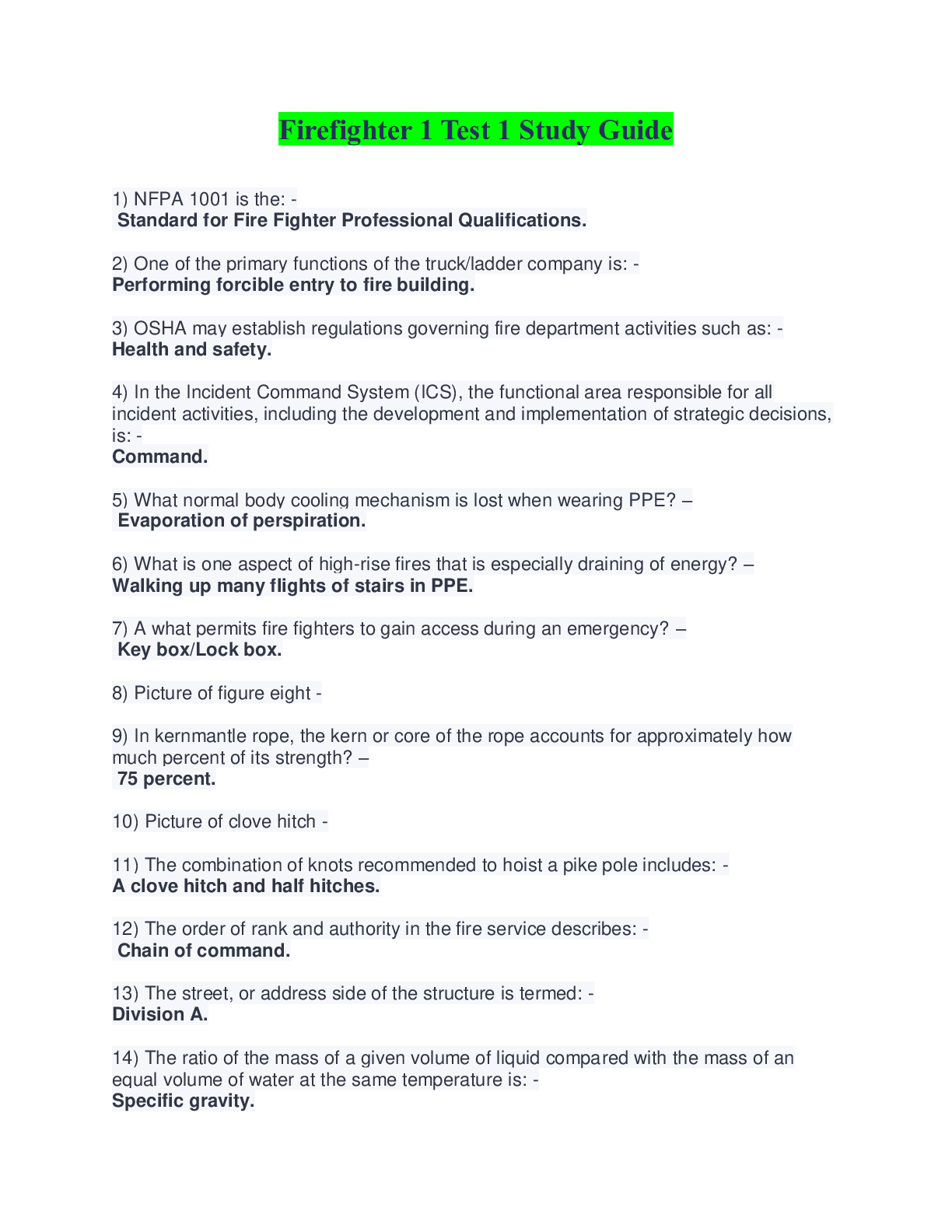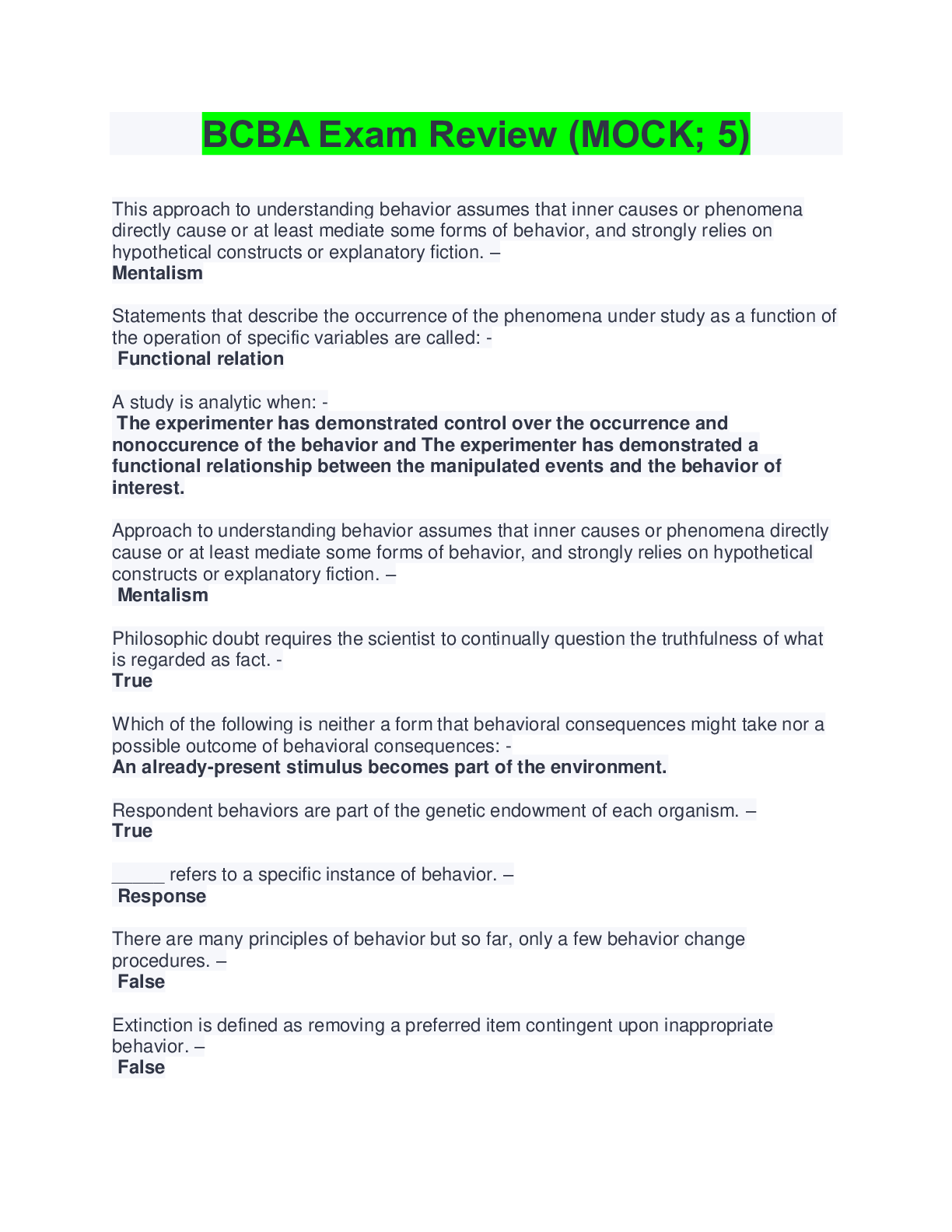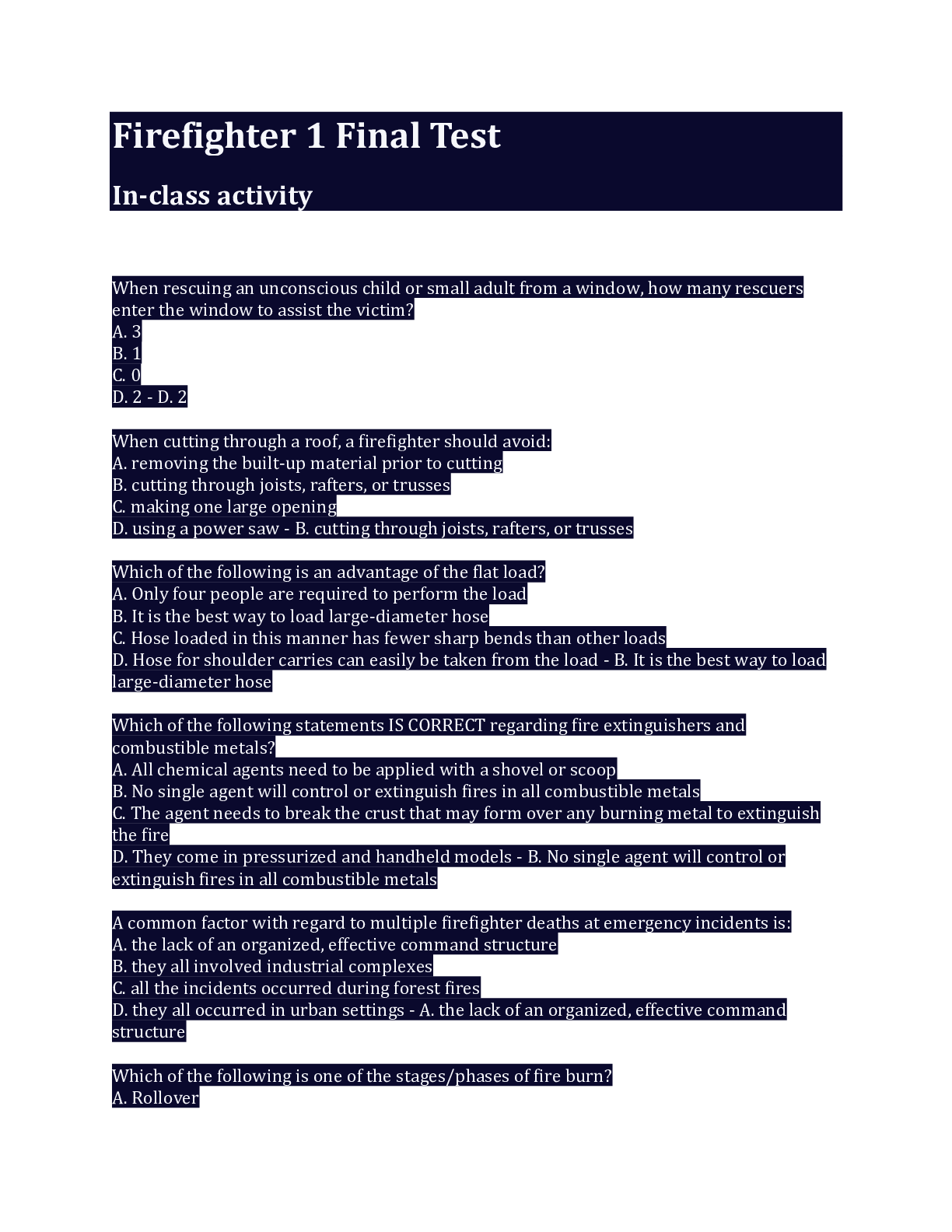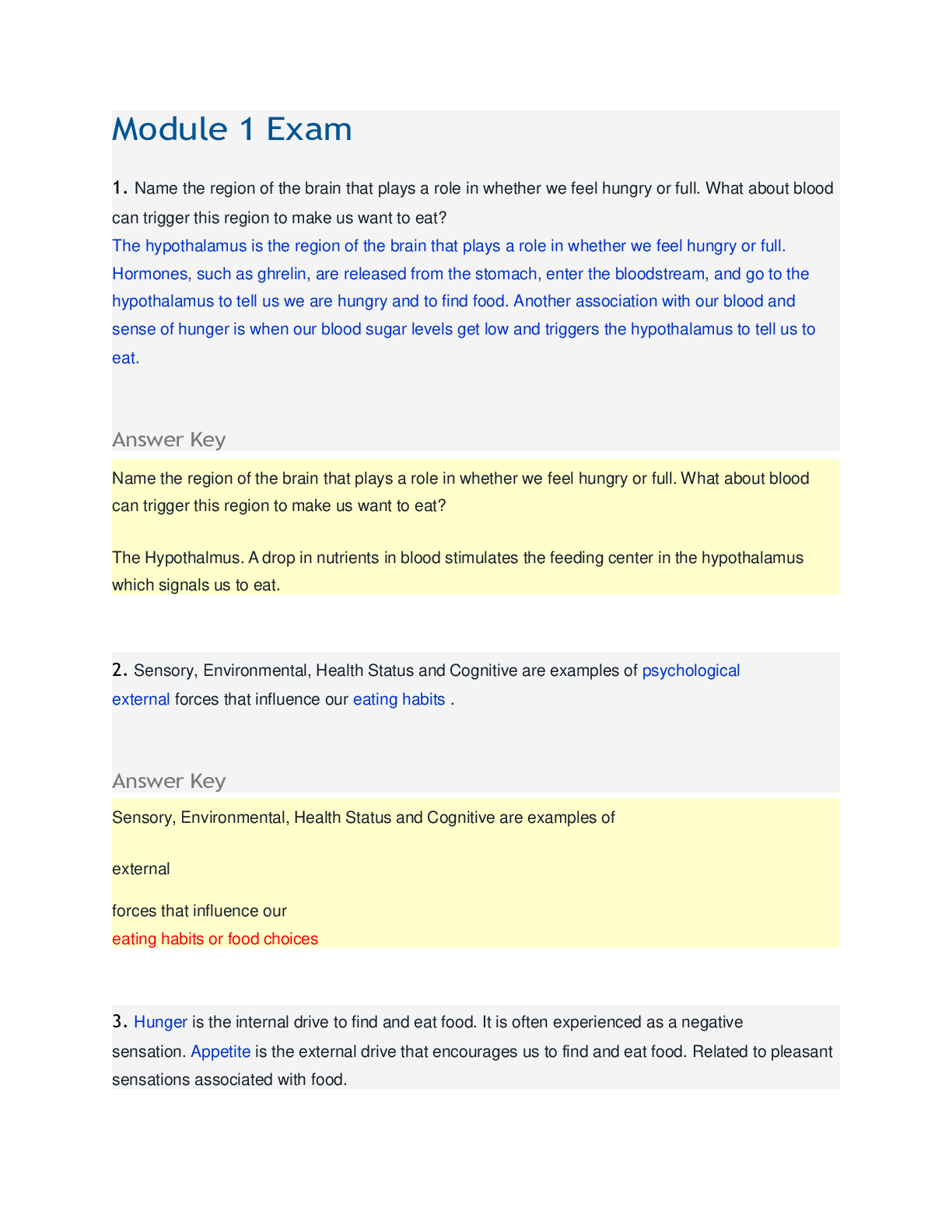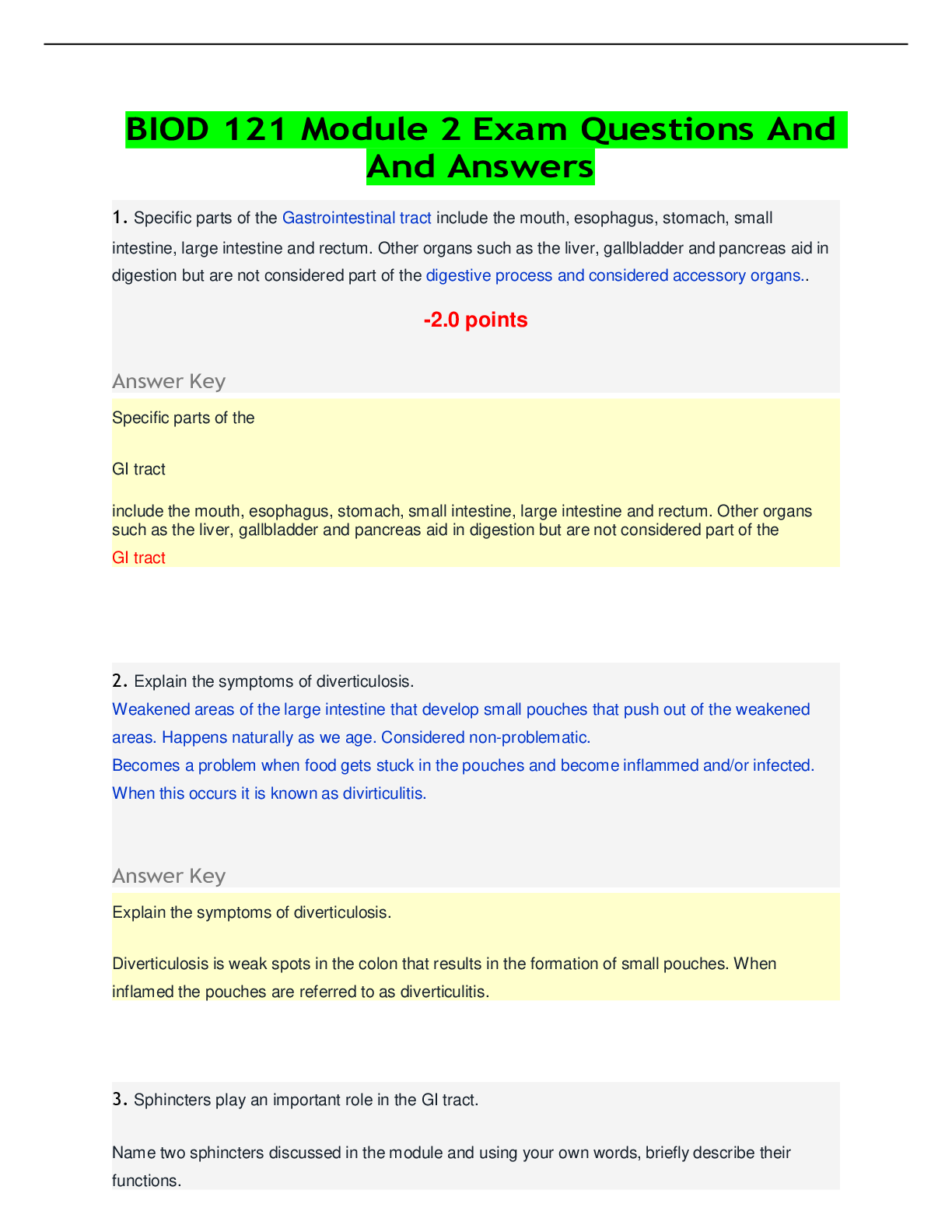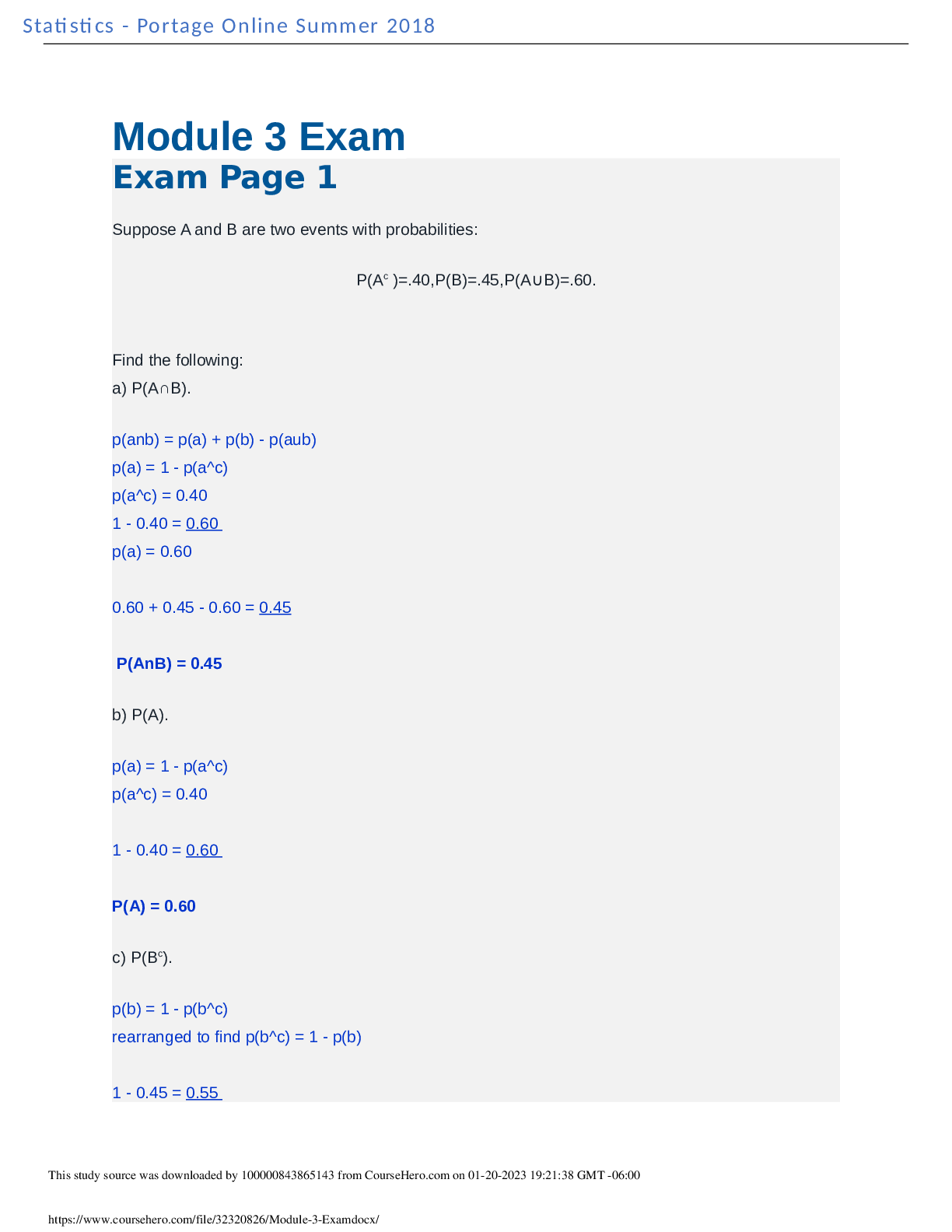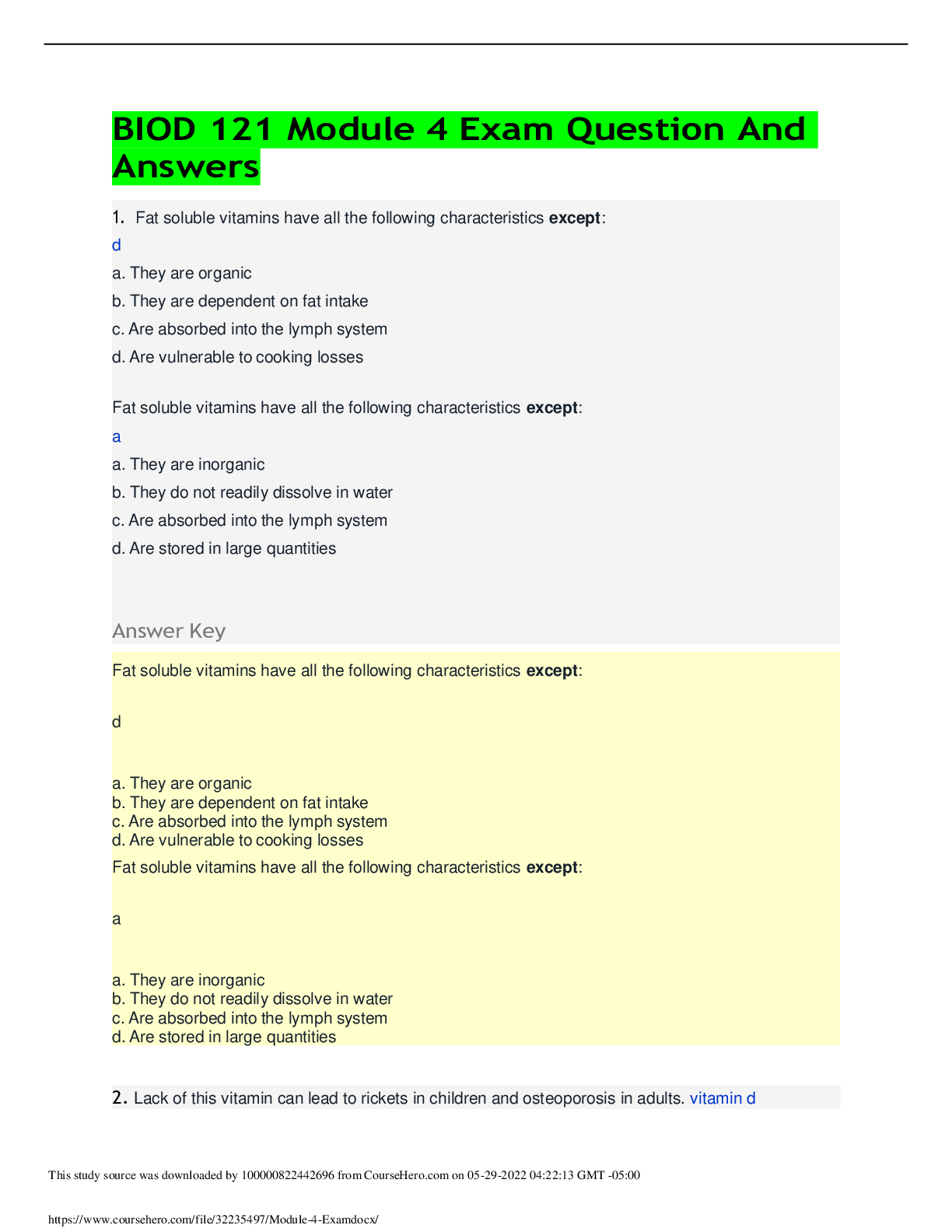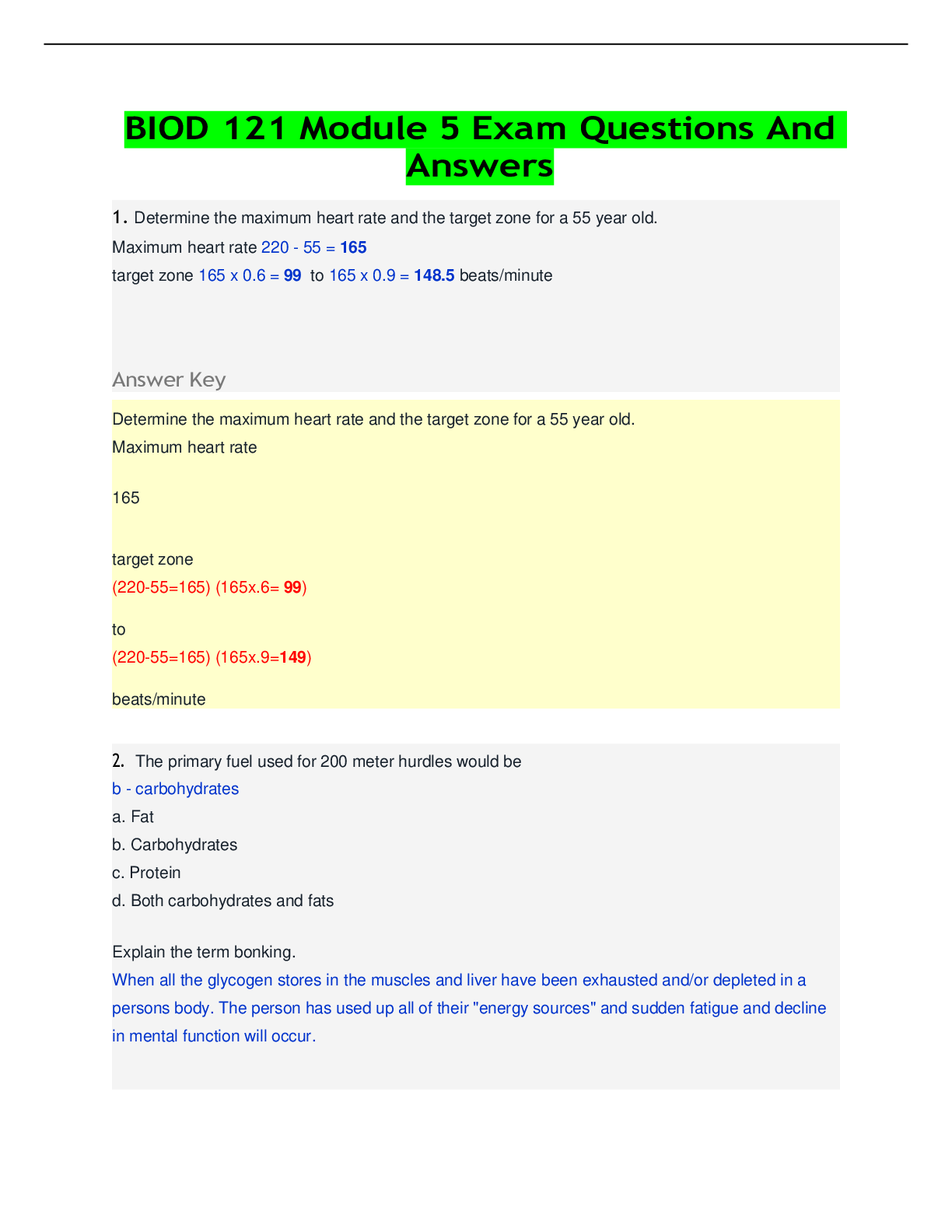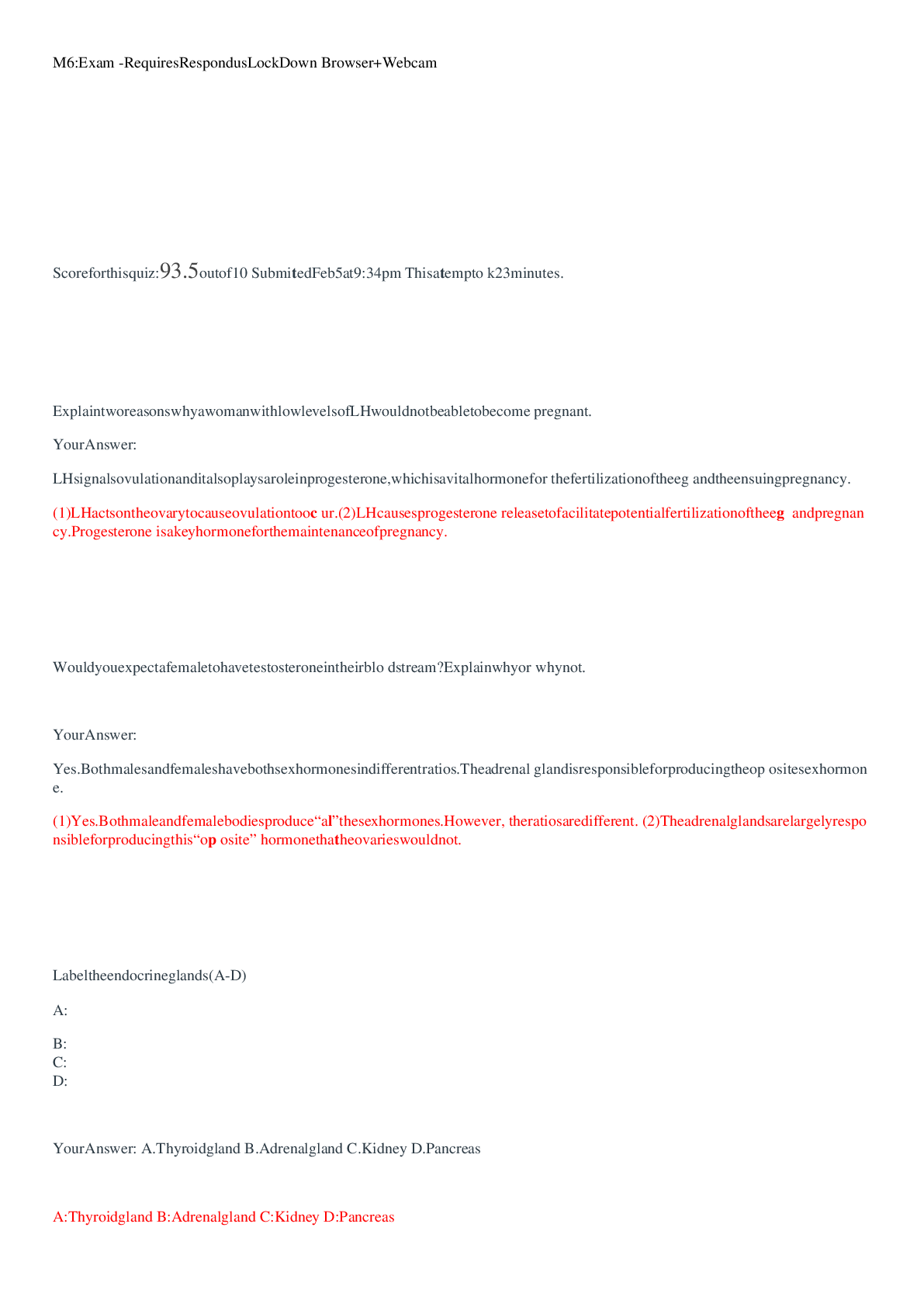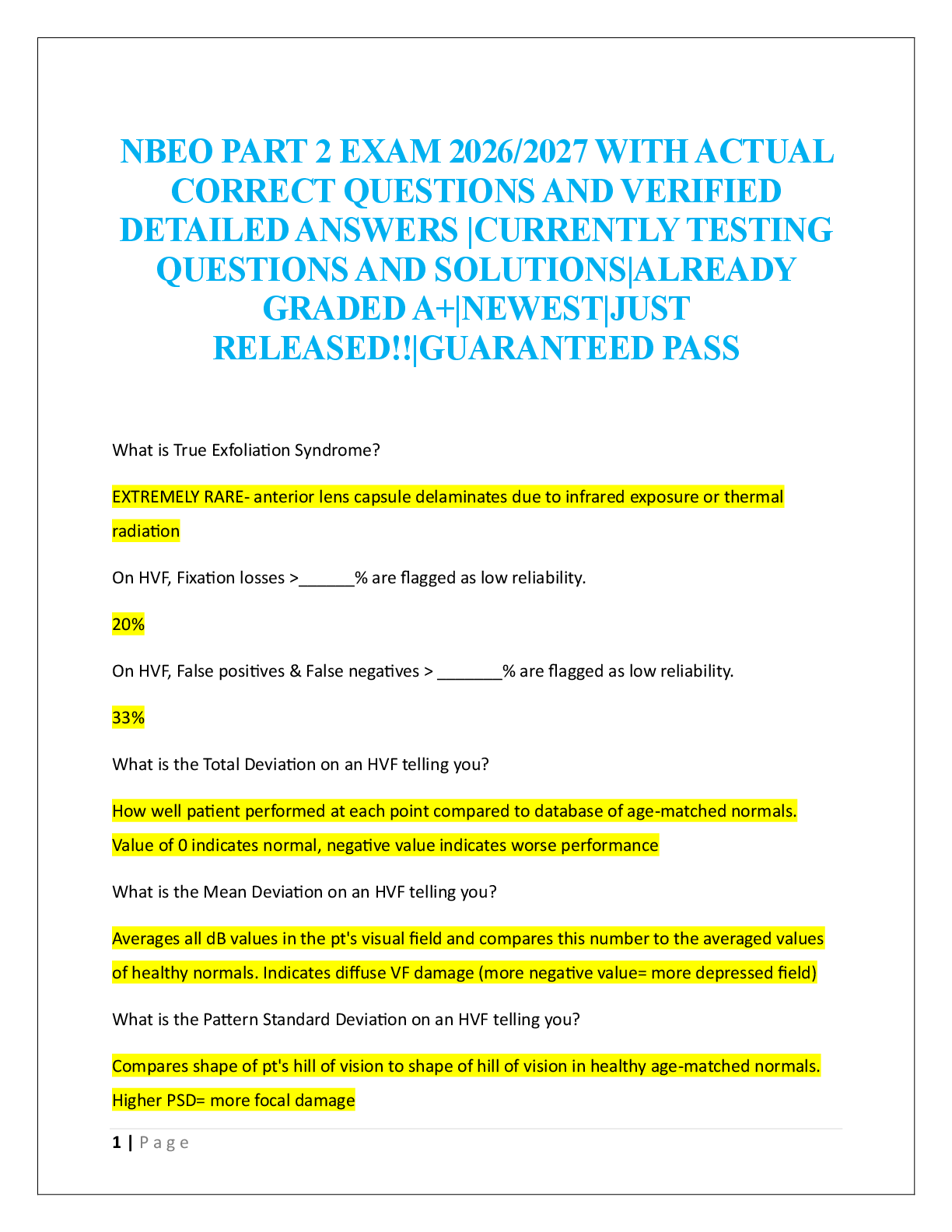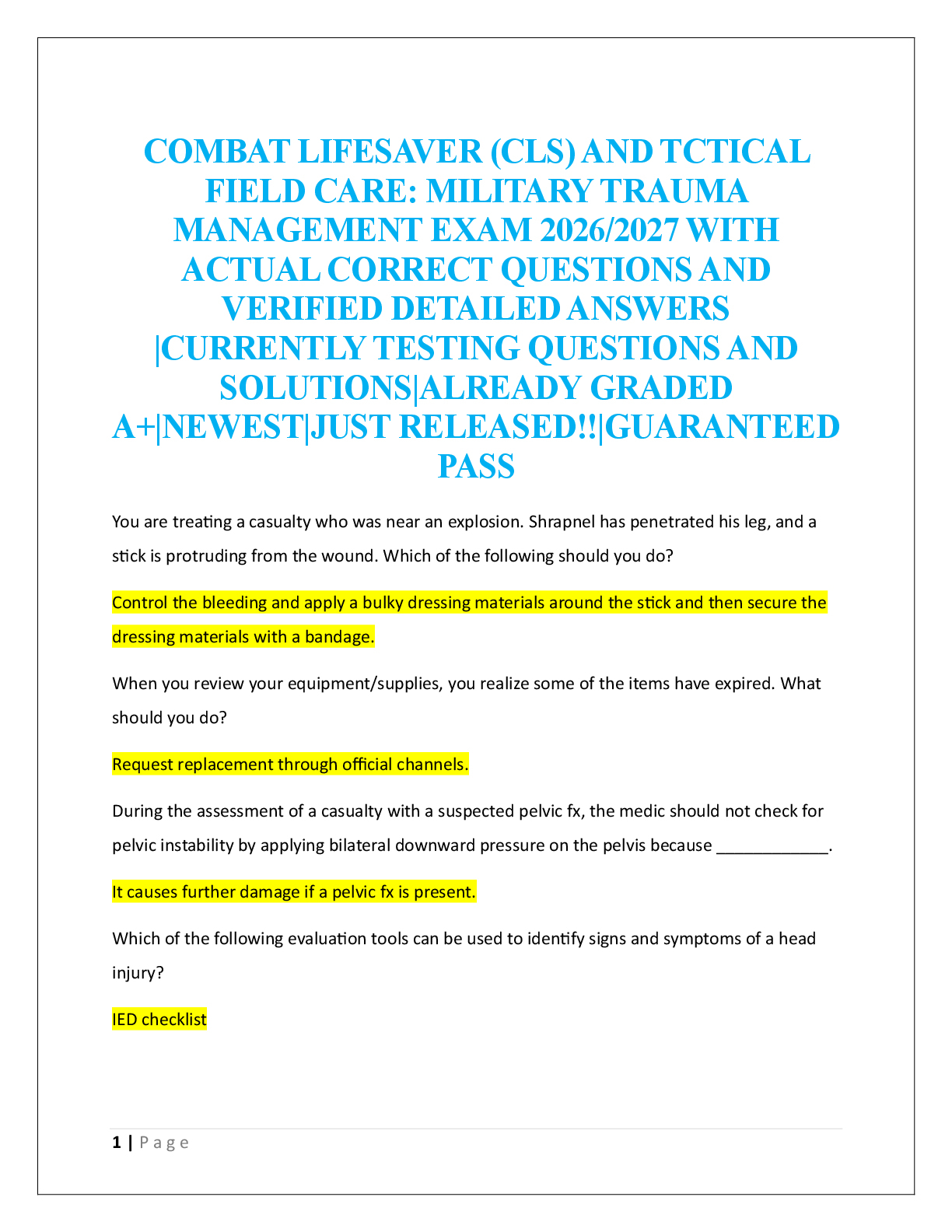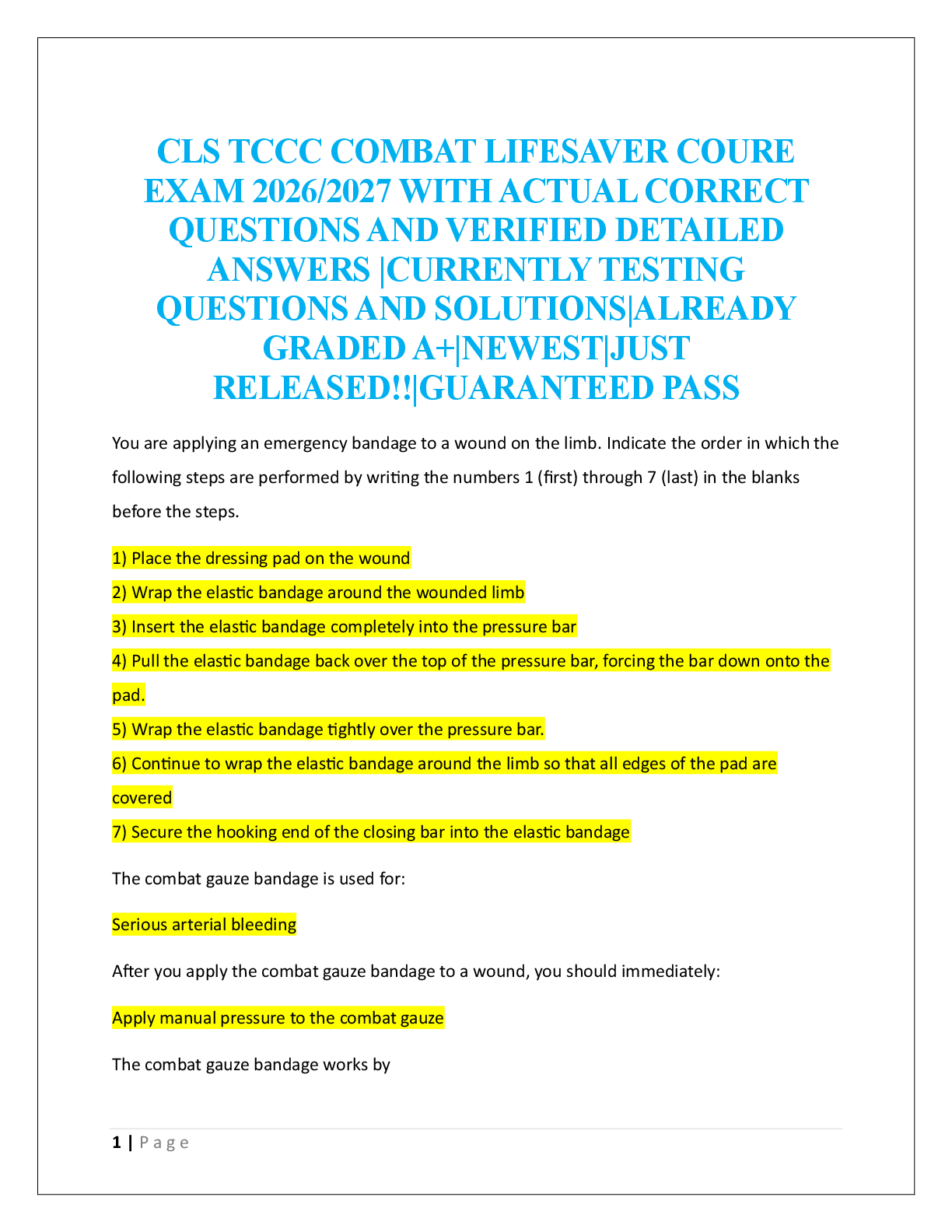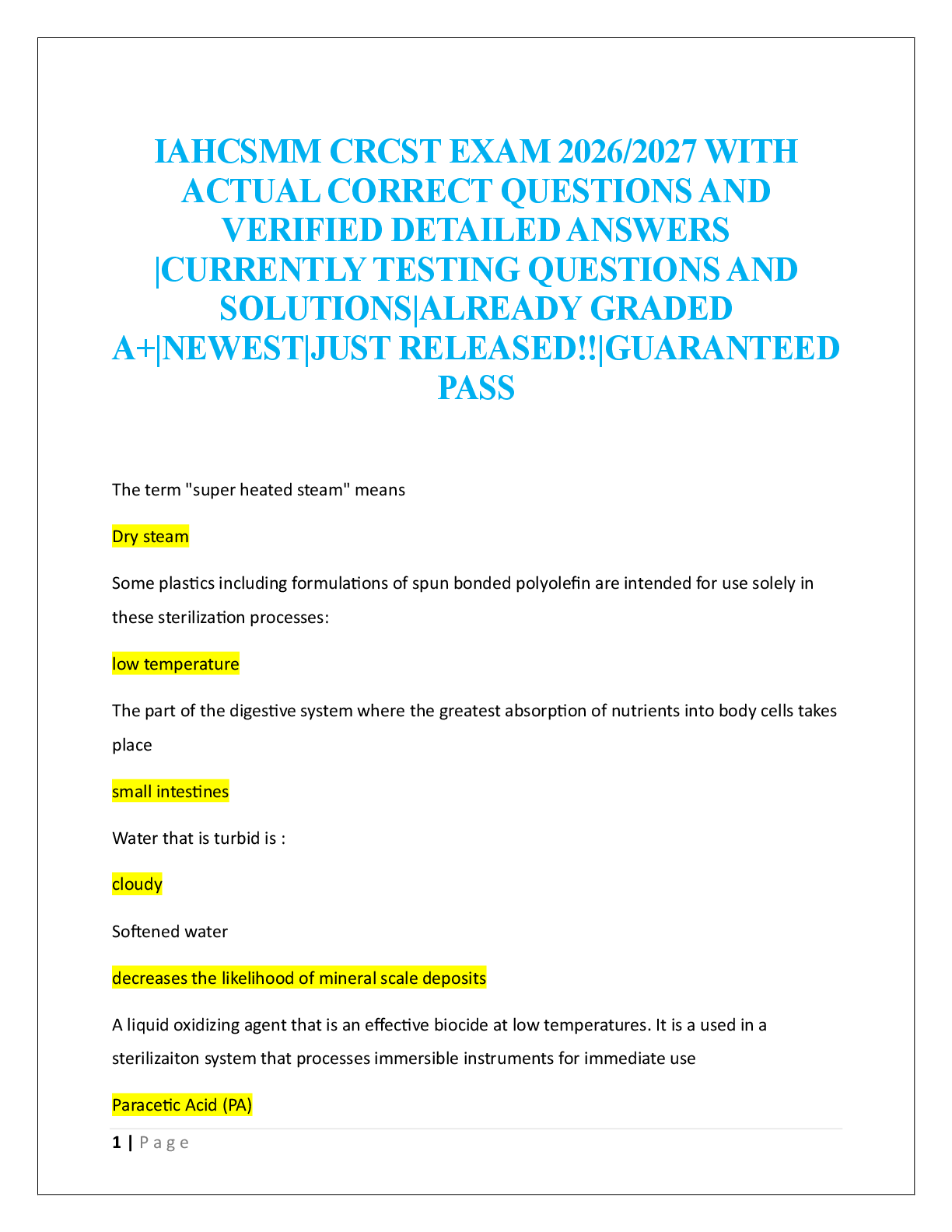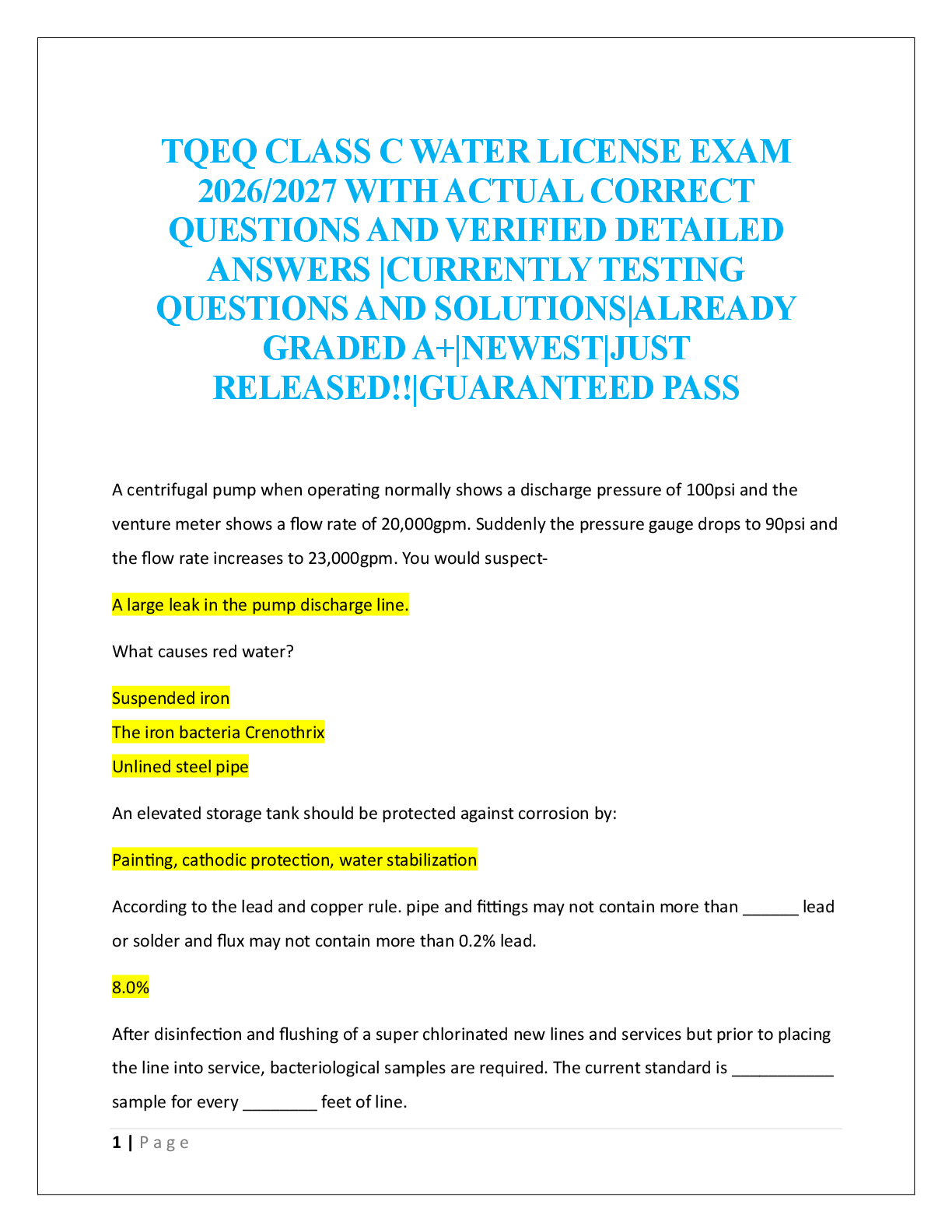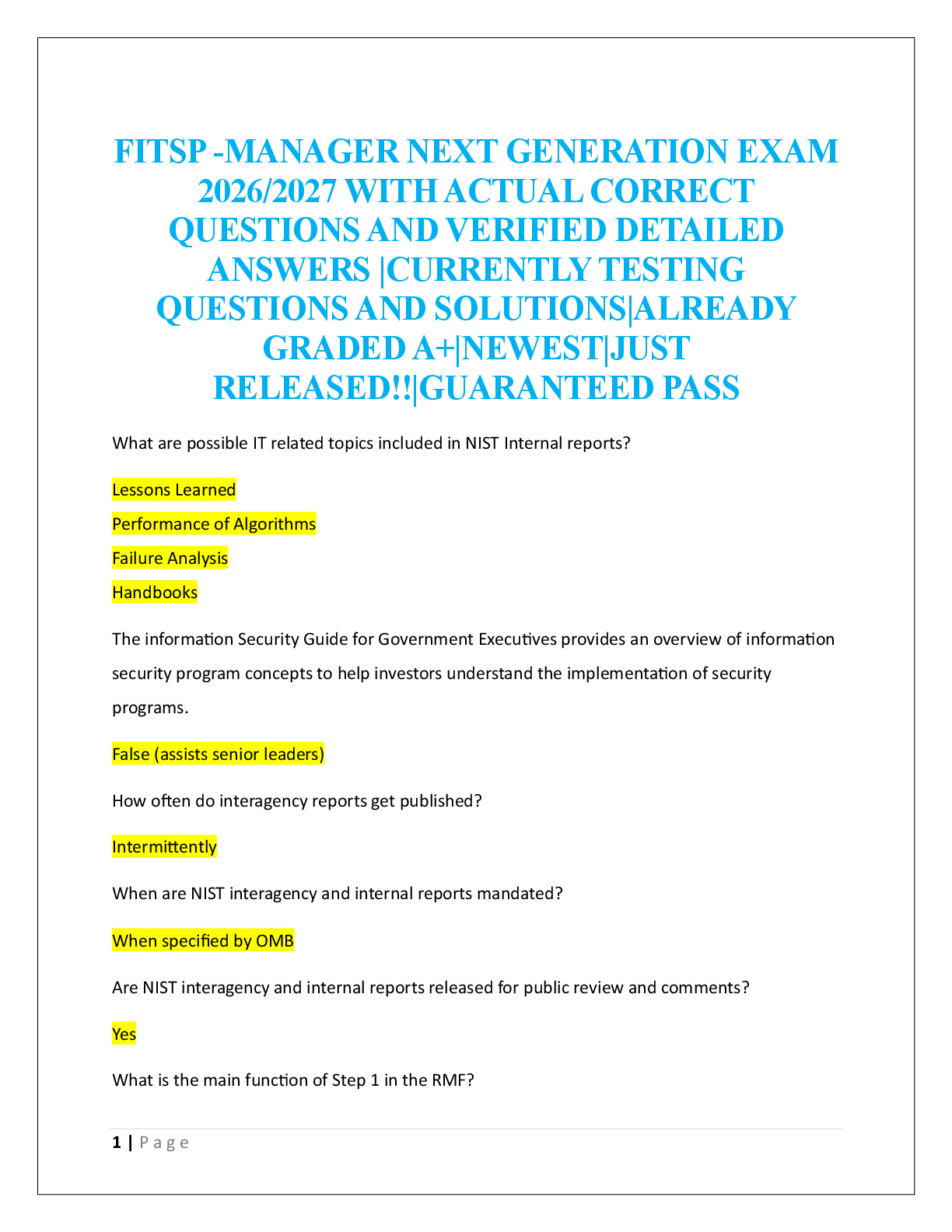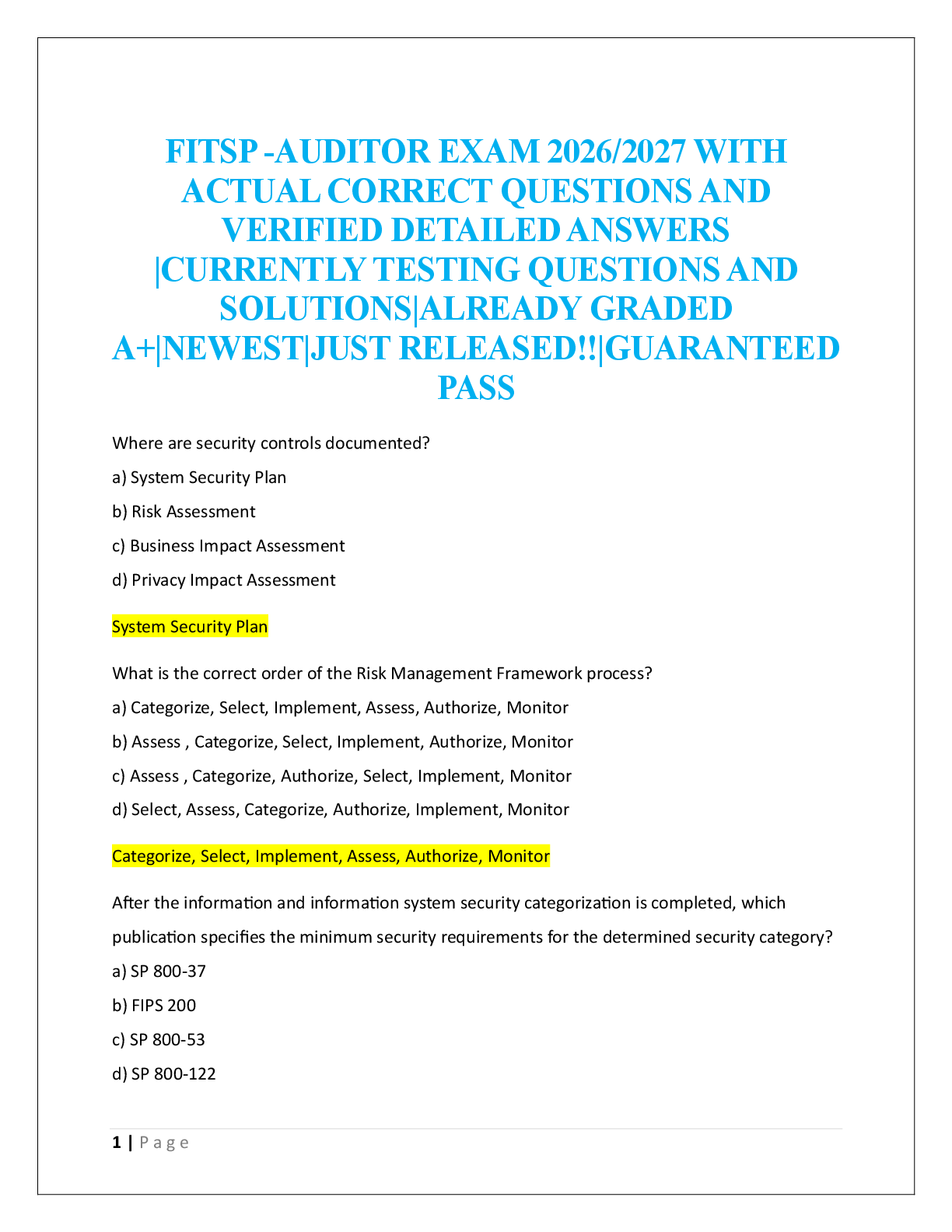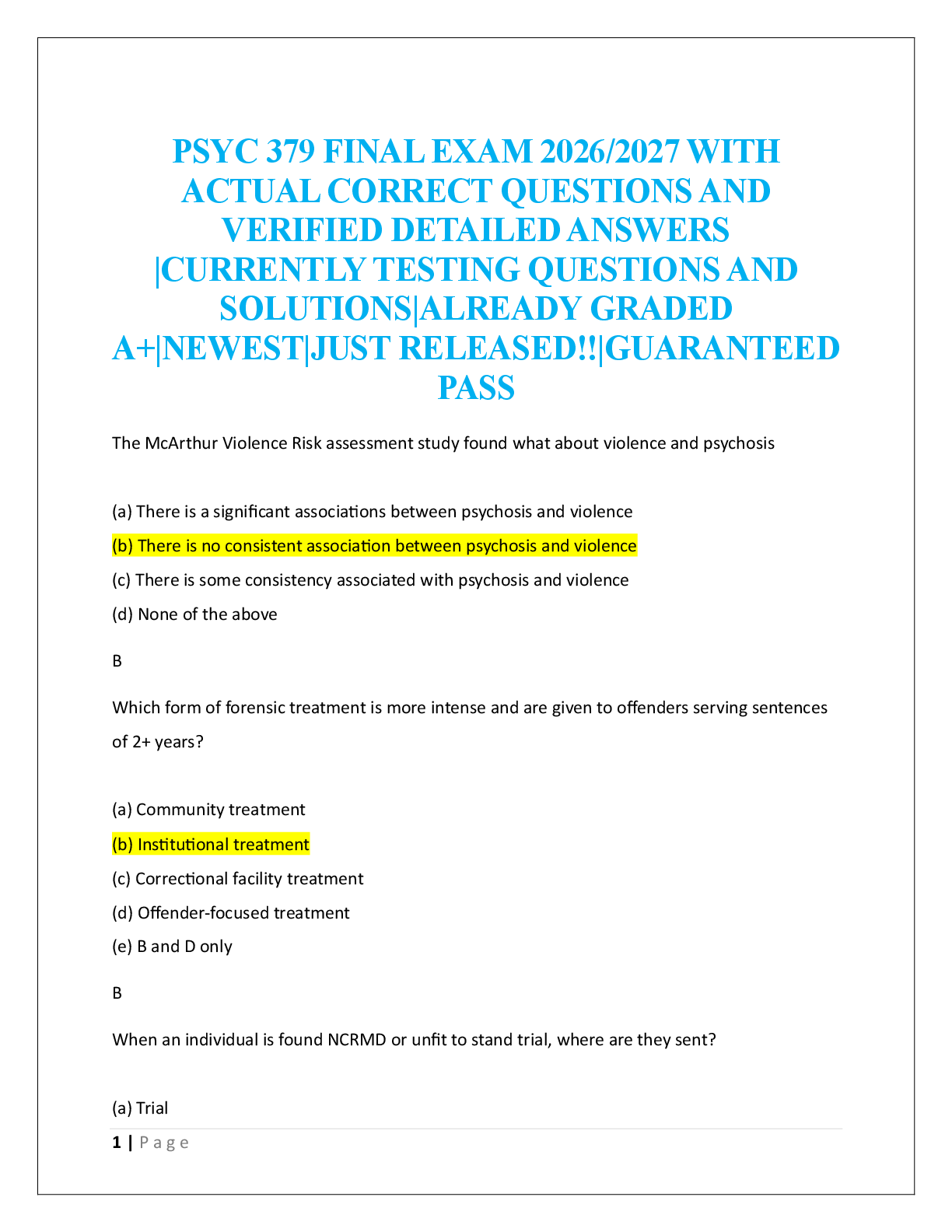*NURSING > EXAM > Chapter 01: The History and Interviewing Process Ball: Seidel’s Guide to Physical Examination, 9th (All)
Chapter 01: The History and Interviewing Process Ball: Seidel’s Guide to Physical Examination, 9th Edition/ RATED A
Document Content and Description Below
Chapter 01: The History and Interviewing Process Ball: Seidel’s Guide to Physical Examination, 9th Edition MULTIPLE CHOICE 1. Which question would be considered a “leading question?” ... 2. Which action would best promote accurate translations as well as confidentiality when the caregiver does not speak the patient's language? 3. Periods of silence during the interview can serve important purposes, such as: 4. Which technique is most likely to result in the patient's understanding of questions? 5. A patient becomes restless during the history and says, “I don't have time for all of this conversation. I've got to get back to work.” Your most appropriate response would be to: 6. When questioning a patient regarding alcohol intake, she tells you that she is “only a social drinker.” Which initial response is appropriate? 7. A 50-year-old man comes to the primary care clinic. He tells you he is worried because he has had severe chest pains for the past 2 weeks. Which initial history interview question is most appropriate? 8. Ms. A. states, “My life is just too painful. It isn't worth it.” She appears depressed. Which one of the following statements is the most appropriate caregiver response? 9. During an interview, you have the impression that a patient may be considering suicide. Which action is essential? 10. You are collecting a history from an 11-year-old girl. Her mother is sitting next to her in the examination room. When collecting history from older children or adolescents, they should: 11. When communicating with older children and teenagers, you should be sensitive to their: 12. When you suspect that your 81-year-old patient has short-term memory loss because he cannot remember what he had for breakfast, you should: 13. To what extent should the patient with a physical disability or emotional disorder be involved in providing health history information to the health professional? 14. When taking a history, you should: 15. When questioning the patient regarding his or her sexual history, which question should be asked initially? 16. Direct questioning about intimate partner violence in the home should be: 17. Mrs. G. reports an increase in her alcohol intake over the past 5 years. To screen her for problem drinking, you would use the: 18. When you enter the examination room of a 3-year-old girl, you find her sitting on her father's lap. She turns away from you when you greet her. Initially, your best response is to: 19. Tom is a 16-year-old young man with diabetes who does not follow his diet. He enjoys his dirt bike and seems unconcerned about any consequences of his activities. Which factor is typical of adolescence and pertinent to Tom's health? 20. Pain is difficult to assess in older adults because: 21. A survey of mobility and activities of daily living (ADL) is part of a(n): 22. Constitutional symptoms in the ROS refer to: 23. J.M. has been seen in your clinic for 5 years. She presents today with signs and symptoms of acute sinusitis. The type of history that is warranted is a(n) history. 24. A pedigree diagram is draftedNfoRr theIpuGrposBe.oCf obMtaining: System: General [Show More]
Last updated: 3 years ago
Preview 1 out of 413 pages

Buy this document to get the full access instantly
Instant Download Access after purchase
Buy NowInstant download
We Accept:

Reviews( 0 )
$23.50
Can't find what you want? Try our AI powered Search
Document information
Connected school, study & course
About the document
Uploaded On
Jul 22, 2021
Number of pages
413
Written in
All
Additional information
This document has been written for:
Uploaded
Jul 22, 2021
Downloads
0
Views
94


